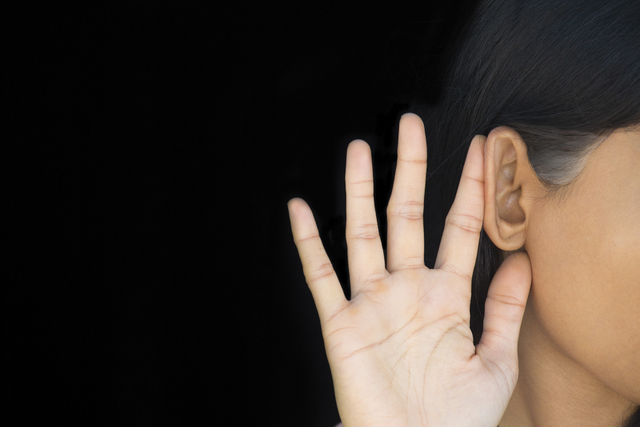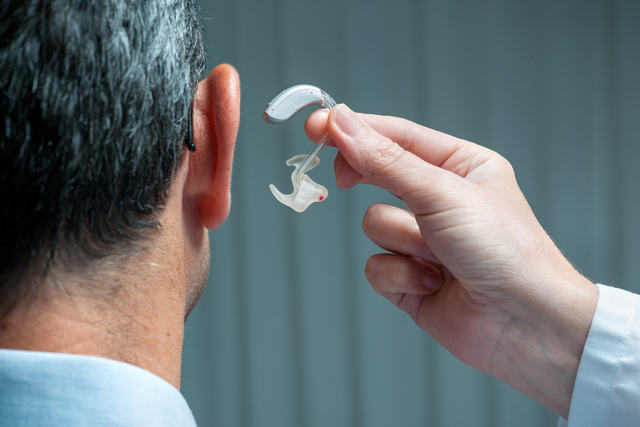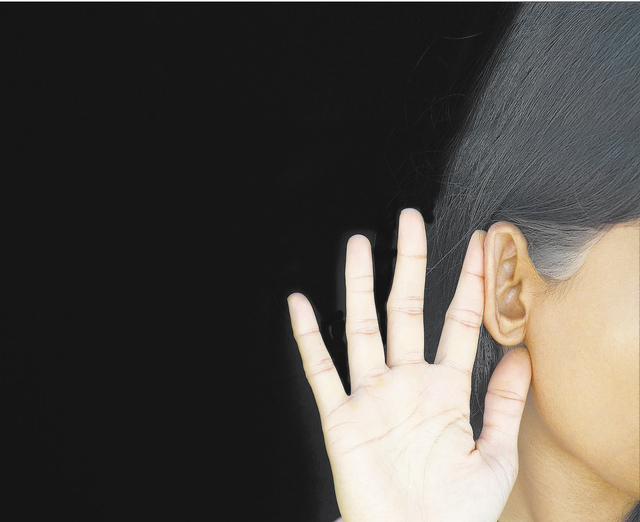Getting past the stigma of hearing-loss treatment
Few devices are as symbolic of the declining years of old age as hearing aids. The rap is they’re unattractive, whistle, are hard to operate and reveal to all the world what many consider an embarrassing weakness.
But studies are beginning to show that ignoring a hearing loss could involve much more than a person’s pride. And ongoing developments in hearing aids are making them less intrusive and more effective.
By age 65, one in three people battle hearing loss, according to the Hearing Loss Association of America. About 20 percent of those who might benefit from a hearing aid actually get one, the Center for Hearing and Communication notes. Experts say hearing loss treatment could improve the lives of millions of Americans.
COGNITIVE FUNCTION
Researchers have begun studying potential connections between hearing loss and cognitive decline. Published in 2013, one Johns Hopkins study found that volunteers with hearing loss who underwent repeated testing for six years saw their cognitive abilities decline 30 percent to 40 percent faster than those with normal hearing.
The Johns Hopkins study is not the only one potentially linking cognitive decline to hearing loss, but Dr. Charles Bernick, associate director of the Cleveland Clinic Lou Ruvo Center for Brain Health in Las Vegas, cautions against reading into a “causal link” between diseases such as Alzheimer’s or dementia and hearing loss. That said, his team still asks about hearing problems when seeing patients concerned about cognitive impairment.
“In some people it could be a fixable contributor to cognitive complaints,” he says, “so it’s always worth paying attention to. … It’s worth treating to optimize that person’s function.”
Decreased social engagement caused by hearing loss can be a big problem for the aging population, adds Dr. Sarah Sydlowski, audiology director of the Hearing Implant Program at the Cleveland Clinic, in Ohio.
“We know that having untreated hearing loss has some kind of relationship with possible cognitive decline and certainly social isolation,” she says.
HEARING AIDS
People often avoid hearing aids because of social stigma, Sydlowski says. Some reports estimate people wait as long as seven years before addressing their hearing loss. But technological advancements have brought more discreet and higher quality devices.
“It’s much smaller now and looks sleeker. It makes it easier to present as an option, but you do need to have buy-in from the patient and a willingness to commit to this process of adapting to using a hearing aid,” Sydlowski adds.
Dr. Amanda Blake of Anderson Audiology notes some aids have Bluetooth and cloud capabilities, both of which can help users find the device if lost, remind them when batteries need replacing and offer other benefits.
Understanding which hearing aids might work for a person’s situation requires research. Blake shed light on some of the most common hearing aids on the market.
■ Receiver in canal: Probably the most popular today, an RIC places a receiver inside the ear and microphone behind the ear, connecting them by a clear-looking wire. That separation helps prevent feedback, that bothersome whistling, Blake says. “They’re sometimes better for noisy situations,” she adds.
■ Invisible in canal: This aid sits deeper in the ear and experts say it’s better for mild to moderate hearing loss. It offers a more natural look.
■ Completely in canal: Flexible for use with a wide range of hearing loss, it tucks behind the front flap of the ear called the tragus and is a little more visible than the other hearing aids.
■ Behind the ear: These tend to be the most affordable and offer a bulkier look, but are beneficial for some people with severe hearing loss.
TREATMENT
Even with great technology, Sydlowski says too often there isn’t enough focus on the whole hearing loss treatment process. There is a certain amount of brain retraining and device adjustment required to fit a hearing aid properly and to see maximum benefits.
“They don’t restore normal hearing, but do improve your ability to stay connected and maintain that quality of life,” she cautions. “There’s a lot more to it than just the device; it’s a tool we address hearing loss with … but a very small piece of the puzzle.”
Sydlowski says audiologists also offer communication strategies. They can help patients learn to deal with environmental factors such as a noisy restaurant, watch for visual cues when others are talking and use other techniques.
AMPLIFIERS, PRICING
When shopping for a hearing instrument, it’s important to understand the difference between an actual hearing aid, which is regulated by the FDA, and a hearing amplifier, which is often marketed very inexpensively in drugstores and online.
An amplifier simply works like a volume knob. However, a hearing aid allows an audiologist to fine tune high, low and middle frequencies to a user’s needs. It’s like having a whole sound board for a live music performance as opposed to only having volume control.
A quality hearing aid can range between $5,000 and $8,000 apiece and should come with unlimited access to the audiologist’s office to adjust the device, Blake says. However, some devices in the $2,000 and $3,000 range can still help, depending on a person’s lifestyle.
Debbie, who asked that her last name be witheld, spent about a year-and-a-half battling both denial and her own vanity when it came to getting a hearing aid, fearing a clunky device that would make her look old, she says.
However, about a year ago, the 63-year-old retiree finally grew tired of missing punch lines and constantly asking friends to repeat themselves.
Debbie opted for a receiver-in-canal hearing aid from Anderson Audiology and rediscovered her appreciation of nature. She started hearing birds chirp in the morning, flowing water in streams and rivers and whistling wind through tall pine trees, she says.
“Oftentimes, as we get older, instead of embracing life and enjoying it, you adapt to it,” she adds. “Some of that is good, but if you’re trying to figure out day-to-day things like sight, smell and hearing, you’re really missing out on life.”
Debbie tried more expensive hearing aids and felt there was a little more clarity, but not enough to justify the price.
“If I was still working and really doing something where I really relied on my hearing, I might consider it, but I didn’t really need the more expensive ones,” she says.
She was fortunate to have her health insurance plan cover the device, which is not the case for most Americans seeking help for hearing loss. There are financing options available and programs from the state’s Department of Employment, Training and Rehabilitation; Easter Seals; and other groups to subsidize hearing-aid purchases for those in need, Blake notes.
“It’s still a hurdle we need to get past with the insurance companies, to realize this is a health benefit that is necessary, that affects more than just your ability to hear,” Blake says.






























